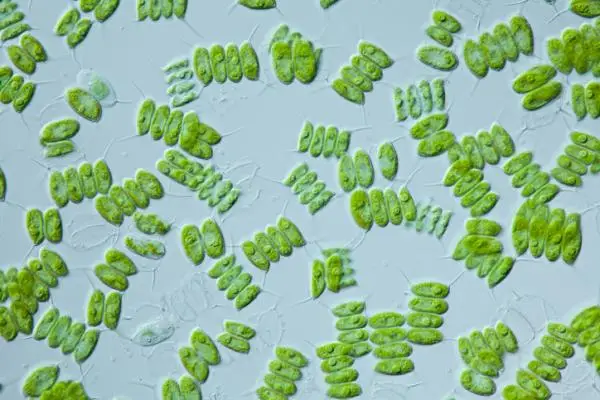The history of the evolution of plants is practically that of complex life on our planet. They were responsible for the enrichment of oxygen in the Earth’s atmosphere and, therefore, for the large number of changes that occurred on Earth linked to this.
If you want to learn more about the evolutionary history of plants, join us in this interesting article in which we offer a summary of the origin and evolution of plants and include images with the timeline of this evolution.
The origin of plants
Life on planet Earth began in the oceans and, therefore, we must also go back to them to find the origin of plant evolution. We are looking here for the appearance of the first plant cells, that is, the first algae. We can say that the first plants were unicellular microalgae that inhabited the oceans.
Its origin is currently attributed to the fusion between a protozoan and a cyanobacterium, capable of photosynthesis. This gave rise to the first eukaryotic and photosynthetic living being endowed with chloroplast. It is estimated that these first algae appeared approximately 1.6 billion years ago.

How plants came to earth
To explain how plants came to earth and the first terrestrial plants began to emerge, several factors must be taken into account and the following important phases can be established, more or less:
- When the first algae appeared in the oceans, complex terrestrial life was not viable. The incidence of UV rays on the dry territory made it impossible to survive outside the water, and for a long time it was necessary for algae and cyanobacteria (from the Monera Kingdom ) to produce oxygen during photosynthesis , which accumulated in the atmosphere and ended up giving rise to the ozone layer .
- This oxygen was lethal to the organisms that survived through fermentation, a process that can only be carried out in oxygen-free (anaerobic) conditions, which had to be removed to non-oxygenated environments. Currently, they still survive in environments such as silt on the bottoms of seas, rivers and lakes.
- Thus, it would not be until between 500 and 700 million years ago that plants were the first to colonize emerged lands, along with fungi and bacteria. It is believed that the colonization of plants on land began in coastal areas such as river mouths or estuaries, where fresh waters mixed with those of the oceans.
- In this way, the plants first adapted to the sweet aquatic environment and, later, they adapted to the terrestrial environment.. These first emerged lands offered very harsh conditions for life: in addition to an even more intense UV radiation than the current one, there was no vegetal mantle on the planet, like the one now, to stop the winds and the terrain was basically divided into rock. hard mother and unstable sediment of rivers and other waters. In addition, the planet already had climatic seasons and, therefore, alternate periods of humidity and drought, to which these first plants had to adapt as well. Of these first plants, complete fossils are not conserved, since they were most likely soft, small parenchymal species with a prostrate bearing. Of them we have microfossils and fragments, like spores . These must have spread over the humid substrates of the Ordovician period.
Summary of plant evolution
We have seen how plant life originates in the oceans in the form of microalgae and how these developed to be able to colonize land areas.
- From these first parenchymal plants that reigned in the Ordovician period, vascular plants were later developed in the Silurian period. These already had vessels through which they transport nutrients and water throughout their structure, which was possible a great development in size and complexity. Vascular plants diversified at full speed.
- The ability to reinforce their conductive vessels with lignin appeared in some species and in Silurian landscapes with grasses and reed beds could be observed , much more similar to those we know today. By now, the first terrestrial arthropods were already living on Earth.
- In the Middle Devonian there appeared the ferchoids and the ancestors of gymnosperms , the first plants with seeds. These were the first to develop taproots deep and xylem in wood.
- By late Devonian forests of great complexity could already be observed on land , with tall trees, bushes and grasses, which would give home to a wide diversity of animal life.
- In the Carboniferous, the first gymnosperms appeared as such, which would give rise to conifers in the Permian. At the end of this last period, however, a crisis occurred that wiped out all Paleozoic vegetation and largely reduced the diversity of plant life.
- Finally, the angiosperms or flowering plants , which are currently 90% of the terrestrial plants, appeared and diversified during the Cretaceous period, already imposing themselves in the Tertiary as the most important and dominant vegetation in the terrestrial environment. The first stage of the Cenozoic Era, which began 66 million years ago, was called Tertiary. If we take this into account, it means that plants such as conifers, which already existed for a long time, have been with us for a long time without hardly changing. In this sense, the Ginkgo biloba or Japanese walnut deserves special mention. This currently unique tree is such an ancient species that it does not retain any living relatives. Quite a living fossil.

One thought on “Origin and evolution of plants: summary”